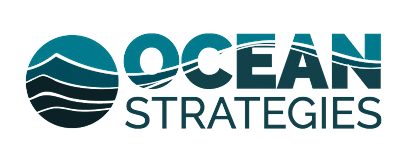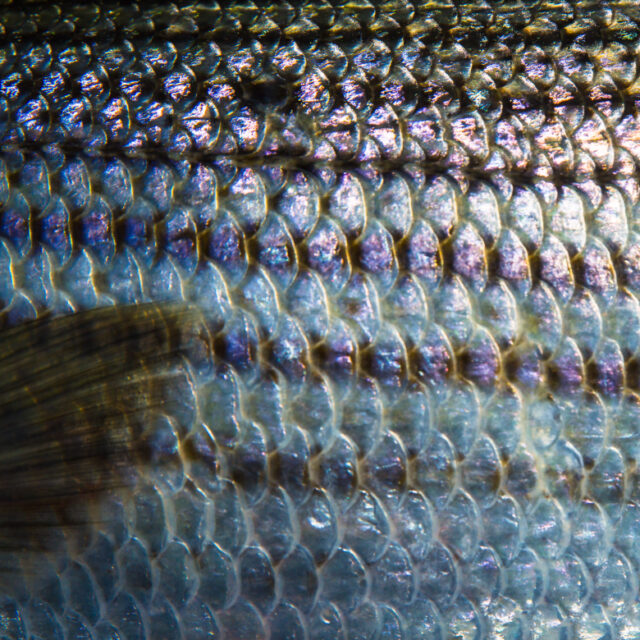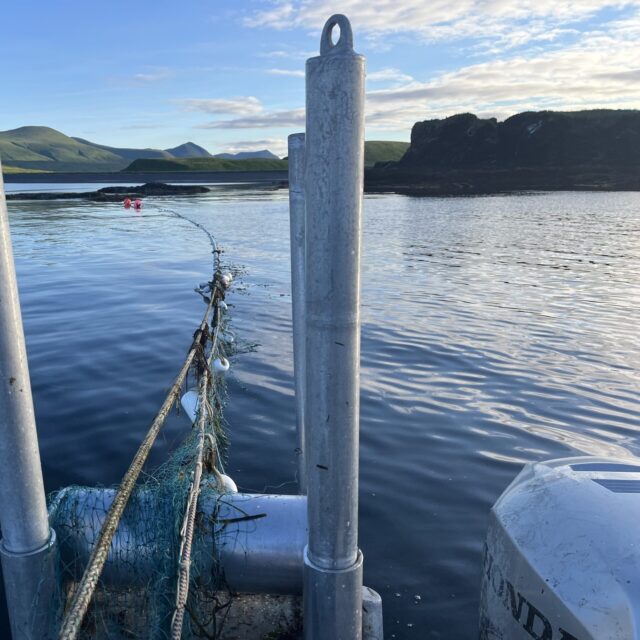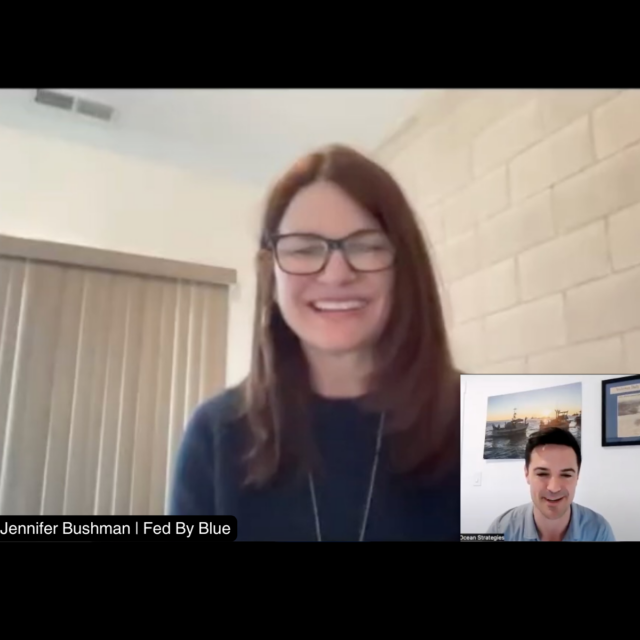Retailers and producers can capitalize on consumers’ preference for eco-friendly seafood
Bridget Goldschmidt Managing Editor
As consumers have grown more concerned about the health of the environment in the face of climate change, the issue has extended from how land-based foods are produced to those of the world’s oceans. According to 2020 research from Stockbridge, Mass.-based consultancy Changing Tastes, most American consumers are worried about the effect of ocean health on fish and seafood, with a majority now concerned about heavy metals, plastic contamination and radiation in their fish and seafood, as well as the use of forced labor and antibiotics. The research found that these issues are now of greater importance than overfishing, which is still a concern for more than eight out of 10 adults.
This year, a substantial 68% of respondents to a survey fielded by The Stop & Shop Supermarket Co. said that they take into consideration where their seafood comes from before making a purchase.
In response to these concerns, the Quincy, Mass.-based grocer, a banner of Ahold Delhaize USA, has developed a sustainable seafood program encompassing an annual local seafood initiative that brings in an assortment of fresh catches from well-known local seafood purveyors.
“Stop & Shop is committed to sourcing only seafood from fisheries and farms that are well managed to ensure that fish populations remain healthy, and fishing and farming methods have a minimum environmental and social impact,” notes Beth Grant, the chain’s seafood category manager. “All seafood we sell, whether it is fresh, frozen, or canned, must meet important sustainability criteria.”
Grant adds that Stop & Shop recently joined the Ocean Disclosure Project (ODP), a public platform from the Honolulu-based Sustainable Fisheries Partnership that enables transparency between businesses and their customers regarding seafood origins and sourcing. On the platform, the supermarket voluntarily reports its seafood sources, adding another layer of transparency to its comprehensive seafood policy.
“While Stop & Shop’s existing policy ensures that its seafood is only sourced from sustainable and traceable fisheries and farms, working with the ODP makes information on the original sources of Stop & Shop’s private label and wild-caught seafood available to customers,” she explains.
The grocer also works with the Gulf of Maine Research Institute, a Portland, Maine-based nonprofit that helps to assess whether seafood items entering stores meet the criteria set forth by Stop & Shop’s seafood policy, among other seafood sustainability moves.
Combating Confusion
Such programs are a major step toward allaying consumers’ fears of purchasing seafood that could be detrimental to ocean health, but confusion still lingers for many, even those that want to do the right thing regarding seafood.
During a recent panel held by Armonk, N.Y.-based IBM on the occasion of World Oceans Day, which occurred on June 8 of this year, consumers’ lack of knowledge about farmed fish, and their subsequent wariness regarding products produced through aquaculture, was among the topics raised. That, of course, is hardly the only seafood issue on which consumers are underinformed.
“Labeling, certifications and overall seafood education can be really confusing,” affirms Brett Veerhusen, principal for Ocean Strategies, a Seattle-based public affairs firm specializing in seafood and maritime industries, and a lifelong Alaskan fisherman himself. “U.S. fisheries are some of the most sustainably managed fisheries in the world. Simply put, buying American means buying sustainable. America’s fisheries are managed under the Magnuson-Stevens Act, which supports science-based management of our ocean resources. Using fishery health as an ocean health benchmark, the U.S. is scoring an A- because 91% of our fisheries are not experiencing overfishing. Retailers who source locally and domestically — and talk about it — are helping our oceans and fishermen, and sharing that commitment with consumers.”
To combat this confusion, Veerhusen suggests introducing shoppers to the men and women who provide their seafood. “People want to connect to the human story behind the meal, especially if they’re paying a premium,” he observes, “and when it comes to telling the seafood tale, from adventure to stewardship, nothing beats hearing it from the harvester. Grocers can highlight American commercial fishermen — in digital, print or at the counter — and let these natural storytellers educate consumers on not only the product’s origin story, but also the company’s sustainability commitments, and what that means for people, the ocean and the fish. Visible partnerships with regional and national fishing organizations are another great way to demonstrate that commitment, and how harvesters, suppliers and retailers are connecting on good practices.”
“As consumers value health and sustainability, they also value supporting their local community,” agrees Jessica Miller, a registered dietitian and nutrition communications manager at the Seafood Nutrition Partnership, an Arlington, Va.-based nonprofit dedicated to building awareness of the health and nutritional benefits of seafood. “Share where the seafood is from and the fishermen who harvested it. Show the faces of local fishermen, fish farmers and seafood-harvesting families, and tell their stories. Engage the marketing team, store-level team, and dietitian team to amplify these stories. Don’t let someone else tell your story!”
After all, as Miller notes, “Customers want products that align with their personal values and are willing to pay more to support companies, fishermen and farmers that care about their health and follow eco-friendly practices.”
Make Waves In The Seafood Section
But with about 90% of U.S. retailers having seafood sustainability programs in place, according to the Conservation Alliance for Seafood Solutions, how can an individual retailer really drive that message home for shoppers? Miller believes that “the best place to start is to highlight the hard work already done by seafood category managers to bring sustainable seafood to shoppers.
“Unfortunately, the amazing progress that has been made with sustainable seafood has not been shared effectively with shoppers,” she points out. “Posting sustainable seafood programs and policies on grocer websites is just the first small step. Retailers should actively provide education to the public. Grocers have access to social media channels, websites, news segments and even a captive audience in the aisles. Using these methods to provide customer education is important and a good way to reinforce the retailer’s credibility.”
In the stores, retailers can use signage in the seafood department to tout their policies, and they should encourage shoppers to ask questions and empower staff to answer questions on seafood sustainability.
“Grocers can use in-store registered dietitians (RDs) to help convey key messages,” advises Miller. “RDs are seen as credible food professionals and can be helpful in spreading awareness about the health, nutrition and sustainability information of seafood. Try a Facebook or Instagram Live with the seafood counter; create messaging and signage for the fresh, frozen and shelf-stable departments; write informational blogs for your websites; [and] share why seafood is healthy to eat and how to buy sustainable seafood,” among other strategies to boost the visibility of a sustainable seafood department.
Sustainability-Centered Products
New seafood products that take ocean health into account include The Kingfish Co.’s Dutch Yellowtail, which recently made a successful debut at Whole Foods Market stores across the United States. The fish is produced through land-based aquaculture, which has a minimal impact on the ocean.
“Land-based aquaculture promotes healthy marine ecosystems and marine wildlife in several ways,” explains Ohad Maiman, CEO and founding partner of The Kingfish Co., which is based in Kats, Zeeland, in the Netherlands. “It stimulates the recovery of marine systems with no bycatch, no bottom/habitat disturbance during harvest, and the monitoring and management of waste. This model allows us to produce a sustainable protein using renewable energy, without disturbing our ocean’s welfare.”
“At Kvarøy Arctic, we recognize the fact that we have to be stewards of continuous improvement,” says Jennifer Bushman, strategic development officer at the company, which operates on its namesake Norwegian island and produces the first-ever farmed finfish to be Fair Trade USA certified. “Every decision stems from a deeply rooted commitment to protect the planet for future generations. Outside of the work that we have ongoing to improve on our farm through technology, innovation [and] recyclable packaging, we recognize that we must develop products beyond the center-of-the-plate salmon fillet.”
To that end, Kvarøy has developed a line of value-added products that “help us to reach more consumers [and] bring access to salmon products in places that need it most at a price point that is more affordable,” continues Bushman. “This means utilizing more trim and scrape meat, lowering food waste and developing more frozen options. The Kvarøy Arctic Hot Dogs and Burgers, along with our frozen retail club packs, make it possible to have fish and seafood on hand while delivering a weekly allowance of omega-3s in every serving.”
According to Bushman, the newly released value-added items are already a hit: “Sales have been building, and the demand for the products is growing. The hot dog is the only hot dog made from salmon on the market, and it tastes like a hot dog.”
The company’s marketing endeavors include “a huge social media campaign with influencers across the country,” she notes. “We have also partnered with grocers to launch mobile campaigns to their online shoppers, email blasts, and coupon programs to support trial.”
“Scotland is an acknowledged global pioneer in sustainable fishing methods, holding more Marine Stewardship Council (MSC) accreditations than most other EU countries,” asserts Clare
MacDougall, head of trade marketing, U.K. and North America) for Seafood From Scotland, based in Newbridge. MSC, a London-based nonprofit, recognizes and rewards efforts to protect oceans, and safeguards seafood supplies for the future.
Current efforts to boost the visibility of the country’s seafood include introducing Scottish seafood products to retailers and foodservice buyers via sample boxes of species such as salmon, steelhead, crab and langoustine, the first of which is timed to go out around the July 4th holiday, while a microsite, launching this year, will enable direct access to Scottish seafood products and highlight Scotland’s long-standing reputation as a leading sustainable seafood nation.
At the store level, a Seafood From Scotland point-of-sale materials pack is available for refrigerated doors and seafood counters, as well as videos highlighting the quality, provenance and sustainability of Scottish seafood, and various recipe cards and books that retailers can feature on their own websites for download.
Additionally, Scotland’s producers have recently ramped up efforts to bring certain species to U.S. consumers in response to higher consumption of seafood in all formats.
“Scottish cod, haddock and other whitefish species will be increasingly on retail counters and on menus in 2021, with value-added breaded products seen in frozen cabinets as well as fresh on counters,” predicts MacDougall.
Swimming Forward
As retailers continue offering sustainable seafood, what should they be doing to further improve ocean health and make sure that the issue remains front and center for consumers?
“Retailers can keep fish stocks healthy by encouraging consumers to eat a wider variety of seafood and buying seasonally from reputable suppliers,” says MacDougall. “Educating consumers on both diversity of seafood and ways to cook and prepare and, importantly, encourage frequency are all ways that oceans remain healthy and diverse.”
“The farming of fish, seafood, seaweed and kelp, and even corals, is not only going to provide a nutritious, affordable protein with a lower carbon footprint, but will also help us replenish wild fish and seafood populations, and even contribute to the health of our waters,” notes Kvarøy’s Bushman. “To get there, we need to all work together,” including environmental activists, chefs, culinary leaders, aquaculturists and retailers.
According to Ocean Strategies’ Veerhusen: “There are three clear steps for retailers to support ocean health and responsibly caught seafood: First, the MSA is up for reauthorization, meaning the law that governs our federal fisheries can be amended through a public and transparent process. Retailers should pay attention and weigh in on proposed policies impacting seafood sustainability and access. Second, educate consumers on your sustainability commitments. It’s difficult to unlearn what you’ve learned, and broad education can have a positive ripple effect to the greater population. Finally, partner with commercial fishermen. Waking up to harvest an American public food resource gives us a great sense of pride, and we love to tell that story.”



